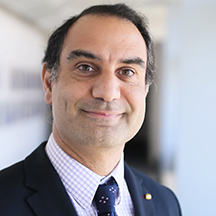
Epidermoid Cyst
What are Epidermoid Cysts?
Epidermoid cysts, also known as epidermal inclusion cysts, are benign growths that develop beneath the skin. They arise from the epithelial cells that line the outermost layer of the skin (epidermis). These cysts are typically slow-growing and contain a thick, yellowish material called keratin and can cause symptoms from increasing pressure on brain structures.
Epidermoid cyst surgery is recommended for symptomatic cysts; fortunately, most can be removed through one of several endoscopic keyhole routes depending upon cyst size and location.
The exact cause of epidermoid cysts is not fully understood, but they are believed to develop as a result of a blocked hair follicle or skin trauma that causes the epidermal cells to be trapped beneath the skin’s surface. This leads to the formation of a cystic structure that gradually enlarges over time.
Epidermoid cysts can occur in individuals of all ages and both genders, although they are more commonly observed in adults. They can develop on any part of the body, but are often found on the face, neck, back, or genitals. These cysts are typically painless unless they become infected or inflamed.
Epidermoid Cyst Neurosurgeons and Specialists
At PNI, we have a large experience of epidermoid cyst removal and a vast experience in minimally invasive endoscopic surgical approaches for all types of brain and skull base tumors and cysts. By incorporating cutting edge technology and instrumentation with proven surgical experience, we make surgery safer, less invasive and more effective.
DOWNLOAD OUR PATIENT’S GUIDE TO ENDONASAL ENDOSCOPIC SURGERY
About Epidermoid Cysts
These relatively uncommon benign cysts or tumors arise from stratified squamous epithelium along the surface of the brain. The most common locations are around the brainstem, pituitary gland and in the posterior fossa along the sides of the cerebellum.
Epidermoid Cyst Symptoms
The clinical presentation of epidermoid cysts may vary depending on their size, location, and any associated complications. Small cysts may be asymptomatic and go unnoticed, while larger cysts can cause cosmetic concerns or discomfort due to pressure on surrounding tissues. Infected cysts may become red, swollen, tender, and produce a foul-smelling discharge. As the epithelial lining continues to produce the soft white keratin material, the cyst puts pressure on the adjacent brain structures and cranial nerves.
This cyst expansion can lead to:
- Headaches
- Weakness
- Imbalance
- Visual loss
- Double vision
- Seizures depending upon the cyst location
Some epidermoid cysts can rupture and result in a meningitis-type reaction from inflammation.
Epidermoid Cyst Diagnosis
Diagnosing epidermoid cysts is usually straightforward based on their characteristic appearance and clinical history. In some cases, imaging studies, such as ultrasound or magnetic resonance imaging (MRI), may be used to confirm the diagnosis and evaluate the extent of the cyst if needed.
Depending upon the location of an epidermoid cyst, a focused MRI of the pituitary region or internal auditory canals may be indicated to obtain better anatomical detail.
Epidermoid Cysts Treatment
The main treatment for epidermoid cysts is surgical excision. This involves the complete removal of the cyst and its contents, including the cyst wall, to prevent recurrence. Simple excision is often performed under local anesthesia in an outpatient setting. However, if the cyst is large, deep-seated, or located in a sensitive area, such as the face, a referral to a specialist, such as a dermatologist or plastic surgeon, may be necessary.
Epidermoid Cysts Removal
Epidermoid cyst surgery is required to remove large epidermoid tumors causing symptoms and is generally quite successful in resolving symptoms.
Because the cyst lining can be very adherent to the brain structures, cranial nerves and blood vessels, a complete cyst removal may not be possible in many patients. If only a subtotal removal is accomplished, follow-up MRIs are necessary for many years to monitor for recurrence.
How do you get rid of an epidermoid cyst?
Epidermoid cysts are treated with surgical resection.
Will a cyst go away by itself?
No, these cysts will either stay the same size or slowly grow over time.
How do you treat an inflamed cyst?
These are treated with a combination of steroids and surgical resection.
Can you squeeze out a cyst?
No, they occur in the bone and brain.
What can happen if a cyst is left untreated?
It may either stay the same size or slowly grow, which could cause new neurological deficits over time.
Why do people get brain cysts?
Some people are likely born with these cysts, though could also be caused by trauma.
Doctors and Specialists Who Treat Epidermoid Cysts
What are Epidermoid Cysts? Epidermoid cysts, also known as epidermal inclusion cysts, are benign growths that develop beneath the skin. They arise from the epithelial cells that line the outermost…









